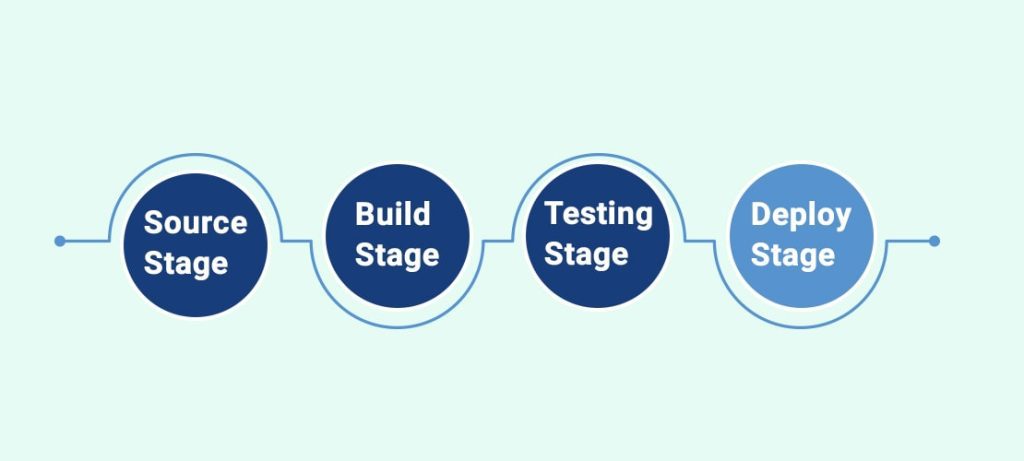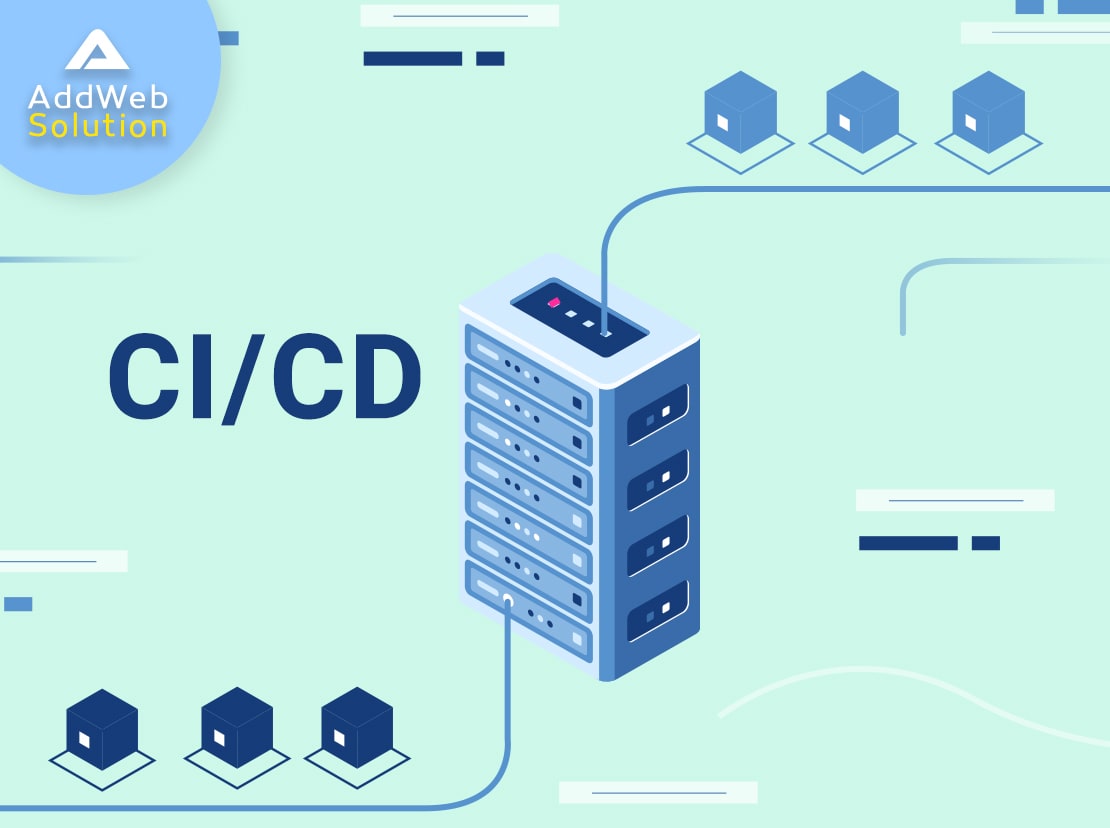As per IDC, the world’s software market for DevOps has achieved a level approximately of 3.9 billion dollars in the year 2017 (this is with the IDC estimates); and the market is forecasted to reach around 8 billion dollars in the year 2022!

In an agile software development environment, the working model and the operations need to be super flexible to the ever-changing needs of the company. DevOps – A combination of tools and practices aid in software development along with IT operations and go hand-in-hand. This cross-functional working mode aims in minimizing the duration of the system’s development life cycle and provides continuous deployment and delivery.
Your Way with CI/CD
You might have many ideas and your product ideas may even be the best of all time, but if you aren’t delivering often, then it would become hard for you to match up with the competition around. Continuous Integration (CI) and Continuous Delivery and Deployment (CD) is about integrating all the major and minor changes to the code and delivering the same, either addition of new features or production, or can even be bug fixes. These code changes are always kept in the deployable state and released into the pre-production environment automatically. Characteristically, this would be happening at least one time and/or then many times in a day (as per the no. of code commits), and this very practice will then encourage to commit small changes frequently than to commit the large ones infrequently.
Permeability of CI/CD Pipeline
CI/CD pipeline is a pathway, through which, a software application is delivered to the customer or client. This process goes through continuous integration, which is adding code changes or modifying the existing code, automated testing stage, delivery of the changes and later deployment into a staging environment. It automates all the steps involved in software development.
Stages in a CI/CD Pipeline
- Source Stage/ Commit
This stage is all about the addition of new features; make small modifications to the existing working model in a view to work more efficiently to meet the demands of the customer. The pipeline is triggered here by a source code repository. Any change in the code triggers a notification.
- Build Stage
Source code is compiled and the system runs unit tests in the Build stage. Once the unit tests are passed, integration testing is done. All the issues arising in this stage have to be addressed immediately. Docker tool is used here to create servers and to move the data into the registry which makes the data ready for the next testing stage.
- Testing Stage
Automated tests take place in this stage to ensure no bugs are present in the entire software and also to check whether it serves the purpose. These tests are carried out from an end-user point of view to validate the quality of the code. Failure in the testing stage shows the inaccuracy of code which leads to rework by developers and the testing loop continues.
- Deploy Stage
Once the software passes the testing stage, the executable program is ready to get deployed to production. Before pushing them directly to production, it is always advisable to have a staging environment that works internally just like a production tool. The staging environment acts as additional testing and review. Once it passes the testing and review with no loopholes, the program is deployed to production.

The Checklist of Benefits of CI/CD Pipeline
The main aim of any software built is to give a robust solution to the problem. The software has to be accurate, minimize the risks involved, and should reach the customer faster. CI/CD pipeline helps in building such robust and accurate software. The following are the benefits for a company if it adapts to the CI/CD pipeline in the agile methodology.
- Inaccurate codes and inconsistent structure are detected in every iteration through the unit and functional tests.
- Failure detection and repair rate increase which leads to an increase in the new release dates. This will help the product team to concentrate more on the new demands of the customers regarding the working of the product. Quick feedback about the released features serves the purpose.
- The viability of the product is tested through quality and stress tests.
- Code changes are relatively smaller in the CI/CD pipeline which is achieved through the integration of code snippets at a faster rate.
- Meantime resolution is shorter as the code changes are smaller with the separation of code faults as and when they arise.

Importance of CI/CD Pipeline for Developers and Operations (DevOps)
Developers and ops work together in the new era of the software revolution. The scenario where there is often unambiguity and separate goals with both often leads to chaos in the environment. This resulted in the combination of both developers and operations through a set of tools and practices which is formally known as “DevOps”. CI/CD pipeline is the pillar of DevOps practices and tools. DevOps works on the principles of Continuous Integration, Continuous delivery, and development through several automated tests.
- High Speed
The software application that embraces the CI/CD pipeline in its working model responds faster to the changes in the code or the addition of new features by a constant feedback activity.
- Increase in Productivity
As the responses become faster, new code changes are effectively implemented into the application thereby increasing productivity.
- High-Quality Software with Shorter Development Lifecycles
As every process in the CI/CD pipeline is automated, the life cycle of the software development is brought to a short time. Though the life cycle is short, there is close supervision of the quality through constant feedback and implementation of revised procedures.
- Reliability
CI/CD pipeline is always reliable with no bounces at the run time. Developers often get frustrated when the run time gets blocked due to multiple failures. As there is constant feedback and fault separation in the CI/CD pipeline, the software becomes more reliable and easy to use.
- Reduction in Testing Costs
As the tests are automated the pipeline can handle hundreds of tests within seconds and give reliable output. In the traditional model of software development, hundreds of tests cost a significant amount. Here, the tests don’t cost much as well are very fast in operation.
AddWeb Solutions

In this automated era, your business will be left out if you do not follow the DevOps practice of CI/CD pipeline. It is high time to start looking for DevOps managed services if you haven’t yet done. Add Web solutions – the leading AWS cloud DevOps consulting and DevOps service provider is the right choice for your business. DevOps solutions by Add Web provide real collaboration and communication between development and operations. The DevOps services provided by AddWeb, which is a DevOps consulting service provider, interrelate the activities of software development through CI/CD pipeline development, continuous integration, continuous testing, and delivery. Highly professional and technically well-trained developers with 24*7 monitoring teams provide cutting-edge DevOps solutions for your business to prosper in the digital world.
Frequently Asked Questions
CI/CD is like a productivity booster. It automates the integration and deployment of code changes, saving time and reducing the chances of errors, ultimately making the development process more efficient.
Think of CI/CD as a code guardian. Automating testing at every stage ensures that code changes meet quality standards, reducing bugs and enhancing the overall reliability of applications.
Absolutely! CI/CD is versatile. While it originated in software development, its principles can be applied to various projects, ensuring a consistent and reliable process for any development.
CI/CD is like a detective for bugs. By automating testing and continuous integration, it catches issues early in the development pipeline, making it easier and quicker for developers to fix them.
CI/CD is your delivery and deployment maestro. It automates the process of releasing code changes to production, ensuring a smooth and continuous delivery pipeline without manual interventions.
Absolutely! CI/CD is a collaboration catalyst. It promotes a shared and automated development process, fostering collaboration among teams and ensuring that everyone is on the same page.

Boost Your Development Workflow – Discover the Power of CI/CD Today!

Pooja Upadhyay
Director Of People Operations & Client Relations

